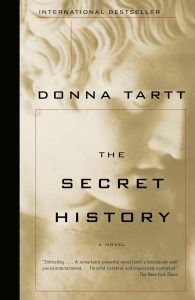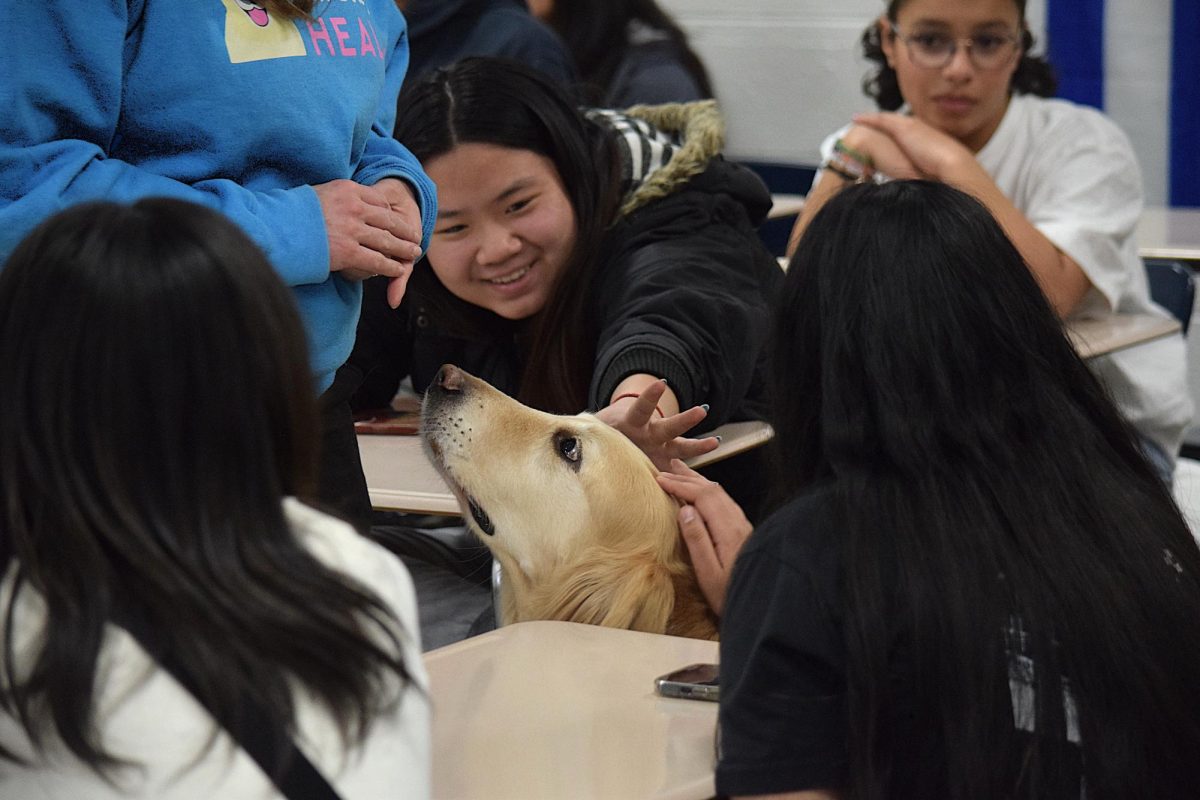Stitching Together Worlds: How Senior Stefven Klein Makes Clothes To Connect The Past To The Present
Photo Courtesy of Stefven Klein
Senior Stefven Klein sits in a tree with his freshly finished, historically accurate, handmade outfit. Klein has been sewing since he was five years old and started making his own clothes only a few years ago. “[Sewing] helps you kind of slow down your mind and focus on what’s happening in the moment,” he said. “You realize that if you’re putting stress into what you’re doing, you’re going to mess up, and you need to take that step back to calm yourself down.”
November 16, 2021
On senior Stefven Klein’s kitchen table is an array of natural fiber fabrics in the works. Cut-outs of patterns traced onto wrapping and freezer paper are pinned on the fabric, and in his hand is a piece of chalk. This is the process Klein uses for his uncommon hobby: making clothes.
“It’s really cool to be able to make something that’s so unique,” Klein said. “[I like to] see how history blends with fashion; the combination of what people like and what types of styles I personally like.”
His passion started at only 5 years old.
“My mother taught me to sew on a machine when I was really little,” Klein said. “I didn’t really do anything for a while, but I just got back into it a couple years ago.”
He has experimented with various kinds of sewing, such as embroidery using silk thread, throughout his life, but most of his sewing, especially in the last few years, has been clothes making.
“I was very surprised when he first decided to make his own historically accurate, time-period waistcoats and shirts,” his mom, Monica Klein, said. “I am impressed with the research Stefven has done and time he has taken on his clothing projects.”
It can be hard to explore hobbies since school is so time consuming. But when he had some spare time, he started to sew again, and now he does so for about three days a week.
Klein explained that he wanted to get back into sewing because it’s a practical life skill and a great stress reliever.
“It helps you kind of slow down your mind and focus on what’s happening in the moment,” he said. “You kind of realize that if you’re putting stress into what you’re doing, you’re going to mess up, and you kind of need to take that step back to calm yourself down.”
Managing stress and learning from mistakes are just a couple of the benefits of sewing; Klein and his mom agree that sewing is a significant skill to have for many reasons.
“Sewing is a valuable skill because it engages both sides of the brain,” Monica Klein said. “For instance, there are measurements, angles, and proportions to calculate along with choices to make regarding color, patterns, and textures. [It] develops fine motor skills, concentration, and patience.”
Using that patience, he has created numerous historically accurate outfits. He has a passion for history; in fact, he is hoping to major in it in college. So Klein uses his clothes-making to show how things have changed over time.
He is interested in how something as simple as bad weather can change fashion just as much as something as catastrophic as World War II. Since there are so many possibilities for changes, he enjoys representing those in his fashion by recreating styles from the 18th century and the 20th century.
“I just like to see different style silhouettes that people have made or gotten rid of throughout time,” Klein said. “It is a type of art form, even if I feel like I’m not qualified.”
His friend, senior Aveline Hwang, argued that he is admirably qualified in clothes-making.
“He knows a lot about fabric and a lot about art history – which I find really impressive,” Hwang said. “So not only are his creations beautifully fabricated, they’re also historically accurate.”
As a high schooler who sews, Klein feels that he still has a long way to go before he would want other people to wear the clothes he makes. Right now, he shares his outfits by posting them on his social media and occasionally wearing them to school. But Klein is constantly working to improve his sewing skills and confidence in his work.
“As the maker you’re constantly critiquing yourself over like, ‘oh, I need to change this or oh, I messed up here,’” he said. “But once you’re able to kind of overcome that and realize that anything you do is going to have mistakes [you] just kind of get a nice feeling of ‘wow, I actually made something, and it’s not falling apart.’ And I think that’s really cool just as a creator.”
Sewing is a hobby he hopes to take with him for the rest of his life, and he hopes others will be inspired to learn as well.
“People should learn to sew at least small stitches at some point, because it is a good skill, even if you’re just mending a hole in a sock.”
This article won Second Place Personality Profile from CSMA.


![Senior Stefven Klein sits in a tree with his freshly finished, historically accurate, handmade outfit. Klein has been sewing since he was five years old and started making his own clothes only a few years ago. “[Sewing] helps you kind of slow down your mind and focus on what's happening in the moment,” he said. “You realize that if you're putting stress into what you're doing, you're going to mess up, and you need to take that step back to calm yourself down.”](https://unionstreetjournal.com/wp-content/uploads/2021/11/Screenshot_20210411-181906_Video-Player-e1637099117728-688x900.jpg)




























